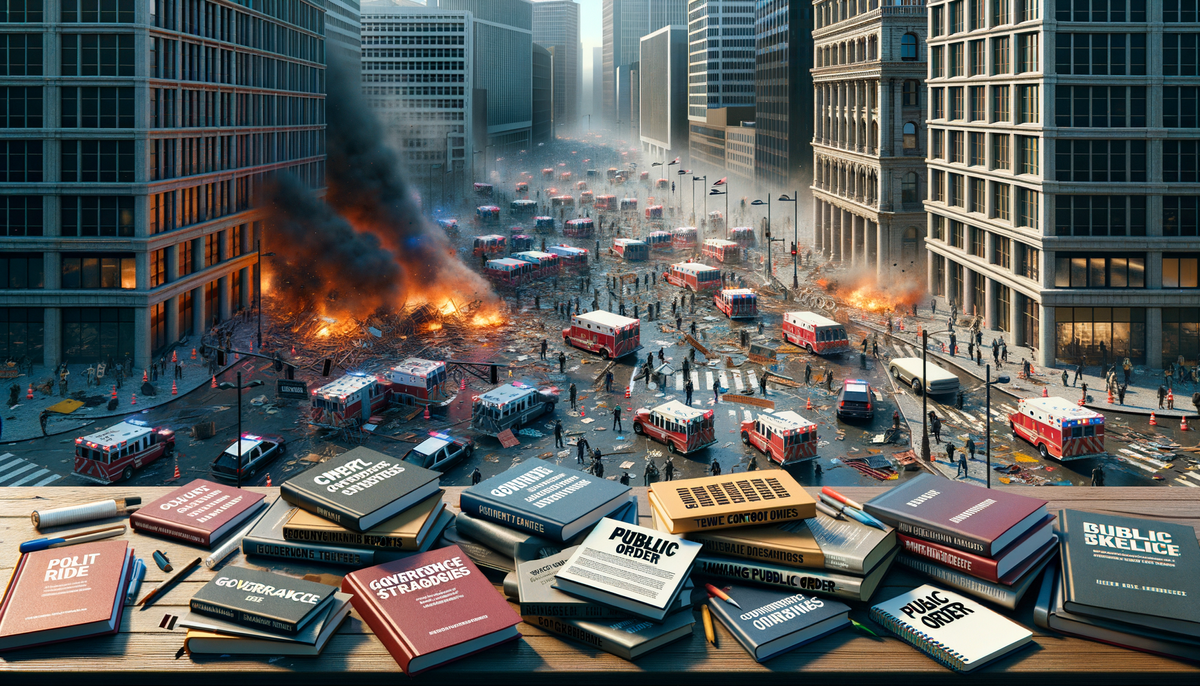Riot: Understanding the Dynamics and Control Measures in Today's Society
Explore the latest insights on riots, their dynamics, and control strategies that professionals need to know. Discover expert recommendations and actionable advice for maintaining public order.

Riot: Understanding the Dynamics and Control Measures in Today's Society
In recent weeks, the concept of a riot has gained significant attention, with particular focus on how these chaotic events shape societal dynamics. A riot is widely recognized as a form of civil disorder where a group engages in violent public disturbance against authority, property, or people. This phenomenon has been documented throughout history and has specific characteristics, causes, and methods of control. Understanding the drivers and implications of rioting is crucial for professionals in the field of social policy and law enforcement.
Definition and Characteristics
Riot incidents typically involve the destruction of both public and private property. The targets of such destruction vary significantly depending on the riot's nature and the participants' motivations, including shops, businesses, vehicles, and government institutions. According to criminal law, a riot is a violent offense against public order, requiring involvement from three or more people. Unlike mere unlawful assemblies, riots are distinguished by their violent nature, which can lead to severe property damage and personal injuries.
Causes and Motivations
The emergence of riots can be traced back to various social, economic, and political conditions. Common causative factors include poverty, unemployment, poor living conditions, governmental oppression, excessive taxation, ethnic or racial tensions, religious conflicts, and even the outcomes of sporting events. While often perceived as chaotic acts of mob mentality, research suggests that riots follow a specific internal logic, where unconventional social norms take precedence.
Types of Riots
Race Riots
Among the most significant types of riots are race riots, where racism plays a pivotal role. This form of violent civil unrest can involve both dominant cultural groups targeting minorities and the reciprocal actions of racial minority groups against perceived injustices. These riots often target neighborhood businesses, government representatives, and law enforcement agencies perceived as biased. Key influences include historical issues such as segregation laws, economic disparities, and police brutality.
Riot Control
Managing riots is a complex challenge for law enforcement agencies globally. Various tactics and tools are employed to restore order while minimizing violence. Techniques include the use of tear gas to disperse crowds, deployment of riot police with specialized gear, and less-than-lethal methods such as flexible baton rounds designed to incapacitate without causing permanent harm. These measures are part of a broader strategy to address the many facets of rioting while ensuring public safety.
Actionable Insights for Professionals
For professionals working in riot control and public safety, it is essential to understand the multifaceted nature of riots. Acknowledging the underlying socio-economic and political causes can enhance strategic planning and community relations. Law enforcement agencies should invest in training programs that emphasize de-escalation techniques and conflict resolution to prevent the escalation of potential riots.
Furthermore, engaging with community leaders and stakeholders to address grievances before they escalate into full-scale riots is critical. By fostering open dialogue and pursuing integrated community programs, legal authorities can preemptively mitigate the triggers of such civil disorders.
The Role of Riot Consulting Firms
Consulting firms specializing in riot control and public safety play a crucial role in advising government bodies and law enforcement agencies. With expertise in crisis management and conflict resolution, these firms help devise comprehensive strategies for maintaining peace and order. Their insights are invaluable in crafting policies that not only address the immediate challenges of riots but also contribute to long-term community resilience.
Concluding Thoughts
Riot dynamics are complex and demand a nuanced understanding of social behavior and law enforcement strategies. Professional discourse around riot control should continue to adapt as societal norms evolve, ensuring that systemized approaches to restore public order remain effective and humane. To learn more about riot management strategies and how they can be applied to improve public safety in your area, consider exploring consulting services that specialize in this critical sector.
Call to Action: As societal landscapes change, staying informed about riot dynamics and control measures is more important than ever. For more information about how your organization can enhance its approach to public safety, we invite you to explore our consulting services. Together, we can build safer communities.




